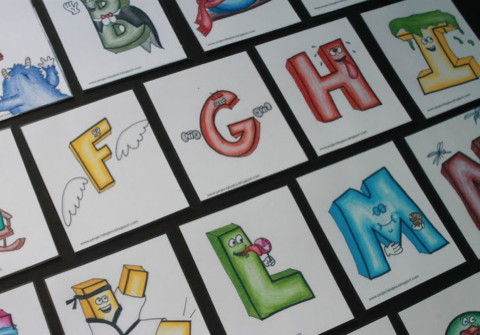
On a cold Tuesday in January, I entered the warmth of Dr. Pamela Beach’s office. Sitting opposite each other, at a small conference table, I scan her bookshelf. Spotting Shel Silverstein’s Where the Sidewalk Ends, I am instantly transported back to my childhood. I recall my grade two classroom, Silverstein’s poems, and the world created within. It seems fitting that this book would invoke memories of childhood reading as I invite Pamela to share about the community she has created through The Queen’s Reading Club.
The Queen’s Reading Club, developed by Pamela, is a part of the Faculty of Education’s Literacy Concentration. First year Bachelor of Education teacher candidates enter the program declaring their concentration and embark on a year of specialized learning. This year, Pamela imagined re-defining the boundaries of the literacy concentration course to create the Club, which was born out of Pamela’s own experience as a graduate student: “I took a course called ‘Struggling Readers and Writers’ with my graduate supervisor and we had to go out and find someone we could tutor, and basically write an intervention report. [The Queen’s Reading Club] is based on that experience. Except the big difference is that my graduate experience was very much an independent part of the course and this [assignment] with the teacher candidates at Queen’s is a cohort.”
Pamela imagined a reading program that would engage her students while giving back to the Kingston community. After sharing her vision with a colleague, Pamela was encouraged to contact learning communities in Kingston. She contacted St. Francis of Assisi Catholic School, “I reached out to the principal Dan Finn—who is wonderful—and I worked with [him] and the staff, who were extremely supportive and open to connecting and making this work.”
The school itself was unique to many of the teacher candidates, rooted in an inquiry model, with collaborative spaces for teaching and learning. Teacher candidates in the course are paired up one-on-one with a student. Pamela notes that, “The students in the club are not necessarily struggling readers—if you wanted to use that term—but they are from a range of different levels. This was nice because teacher candidates are working one-on-one, even if it is someone who is in grade four or five but achieving reading levels of grade six or seven.”
In September, Pamela and her students went to the school to tour the community, learn about the students, and develop an understanding of the diverse learners within the space. As a cohort, Pamela’s classes were held weekly at St. Francis of Assisi. “When we arrive each week, we have a community meeting to address what are we thinking and what are we doing. The teacher candidates in the course all have a collaborative working group, specific to the grade level of their student.”
At the root of the program is capacity building. Pamela stresses the importance of relationship-building as a community of teachers, learners, and individually between the teacher candidate and early reader. In addition to relationship building, the teacher candidates also focused on diagnostic assessments that related to reading and writing specifically. Away from the school, the teacher candidates were supported through their course work to develop and prepare assessments for their learners. Each week the teacher candidates were invited to review their learning and progress with their early reader. The Queen’s Reading Club created an opportunity for the teacher candidates to focus on their learner’s growth while modifying their learning plan to fit the learner’s progress. In total, the teacher candidates had seven meetings with their learners, initially focused on diagnostic assessment and then targeting specific skills. The teacher candidates considered the student’s interests and provided learning material, games, and readings that related to their particular student.

Pamela’s passion for the program is rivaled by her students. After discussing the program with her, I had the opportunity to hear from some of the teacher candidates who formed this cohort of learners and leaders. Teacher candidate Monica Lawrence explains, “The Queen's Reading Club provided me with the opportunity to apply the knowledge acquired in the Literacy Education Studies course in a one-on-one reading session… Overall, the time we spent together provided us both with new knowledge, learning, and skills to move forward as a student and a teacher candidate.”
Others shared similar sentiments. Beyond the utility of theory and practice, Emily MacDonald shared that the highlight for her “was seeing [her] student progress over the seven weeks and gain confidence in his literacy skills!”
Echoing Emily, Sarah Kleinman highlighted the value of in-tandem learning. While observing the growth of her learner, Sarah says that she was also able to “develop [her] own learning around assessments, targeted literacy interventions, and the pre-reader skills required for literacy development.”
Rosemary Takac draws on the intimacy and uniqueness of the experience, “The opportunity that Dr. Beach has given us with the Queen's Reading Club has been fantastic. Much of the time spent on campus is listening to lectures and theory, leaving only your practicums to implement that which you have learned. The Reading Club has allowed me to take that theory, use it in a real-school application and get out of the lecture halls. Seeing it implemented in such a fashion gives us extra tools that can be used while out in our practicums. I hope it continues to be offered to future teacher candidates, and I wish we were able to continue for longer.”
The Queen’s Reading Program is a testament to the value of community learning. Through its work, Dr. Beach has created a world of possibility and a memorable learning experience for all involved.